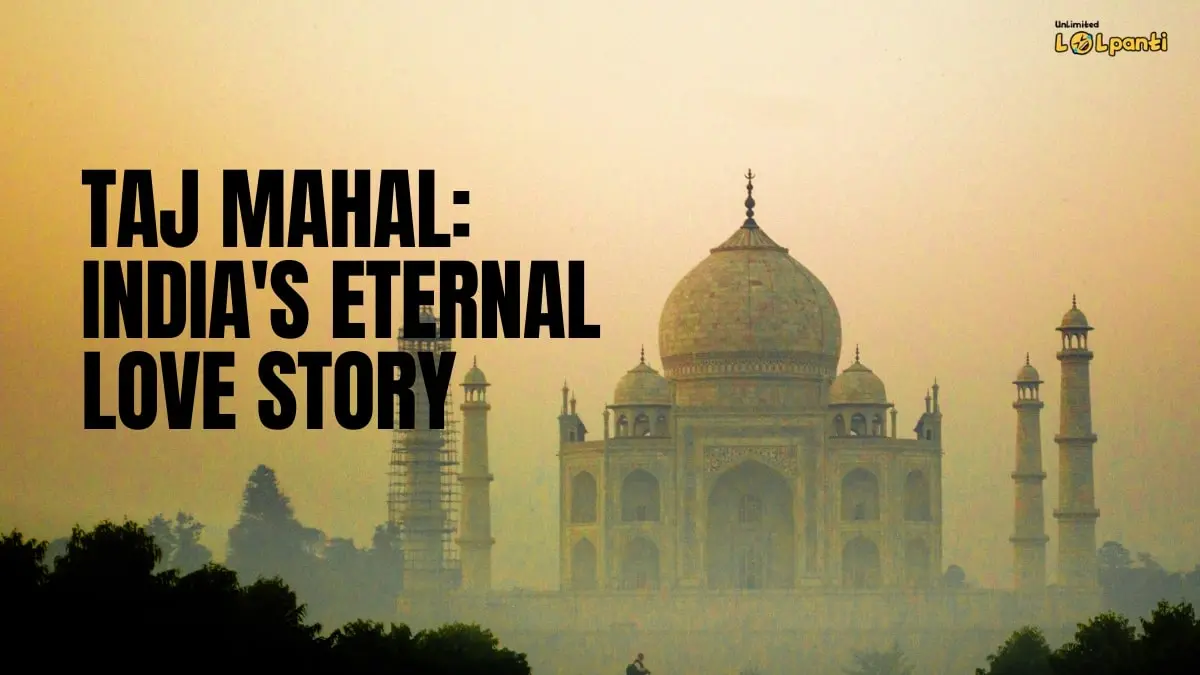In the heart of Agra, India, stands an architectural marvel that transcends time and culture—the Taj Mahal. This ivory-white marble mausoleum, recognized globally as a symbol of eternal love, has a rich history, captivating stories, and amazing facts that contribute to its mystique. In this comprehensive blog, we will delve into the details of the Taj Mahal, exploring its historical significance, architectural brilliance, and the timeless love story that inspired its creation.
Historical Background of Taj Mahal
To truly understand the Taj Mahal, one must step back in time to the 17th century when the Mughal Empire was at its zenith. Founded by Babur in 1526, the empire reached its cultural pinnacle under the rule of Emperor Shah Jahan. Known for his passion for art and architecture, Shah Jahan commissioned the Taj Mahal as a tribute to his beloved wife, Mumtaz Mahal.
The Love Story of Shah Jahan and Mumtaz Mahal
Shah Jahan’s deep passion for art was paralleled by his profound love for Mumtaz Mahal. The story of their romance began when Khurram, at the age of 15, met and fell in love with Arjumand Banu Begum, later known as Mumtaz Mahal. They married in 1612, and Mumtaz Mahal became the emperor’s favorite wife.
Tragically, she died during childbirth in 1631, leaving Shah Jahan devastated. It is said that on her deathbed, Mumtaz Mahal requested a promise from Shah Jahan—to build a monument that would immortalize their love.
Architectural Splendor of Taj Mahal
Design and Layout
The Taj Mahal stands as a testament to Mughal architecture, blending elements of Persian, Indian, and Islamic styles. The complex is meticulously designed, with the main structure flanked by a stunning garden and complemented by several other buildings. The central mausoleum houses the tombs of Shah Jahan and Mumtaz Mahal.
The White Marble Wonder
Crafted from pristine white Makrana marble, the Taj Mahal’s radiant beauty is unparalleled. The marble was sourced from Rajasthan, and its intricate detailing, including delicate carvings and inlays, showcases the mastery of Mughal artisans. The translucent quality of the marble allows the monument to glow in different hues throughout the day.
The Four Minarets
Standing at each corner of the main platform, the four minarets are a distinctive feature of the Taj Mahal. These slender towers not only add to the aesthetic appeal but also serve a structural purpose. In case of an earthquake, they are designed to fall away from the main tomb, protecting the central structure.
Construction Process and Materials
Skilled Artisans and Craftsmanship
The construction of the Taj Mahal involved the labor of thousands of skilled artisans and craftsmen. Master builders, calligraphers, and stonecutters worked together to bring Shah Jahan’s vision to life. The level of precision in the intricate designs, the delicate marble inlays, and the detailed calligraphy on the walls is awe-inspiring.
Precious Gem Inlays
One of the lesser-known facts about the Taj Mahal is the extensive use of precious and semi-precious gemstone inlays. The marble surface is adorned with intricate floral patterns crafted from lapis lazuli, jasper, turquoise, and other precious stones. The play of light on these gemstone inlays creates a mesmerizing effect, adding to the monument’s opulence.
Preservation Efforts and Challenges
Environmental Threats: Despite its enduring beauty, the Taj Mahal faces numerous challenges, primarily from environmental factors. Air pollution, acid rain, and the impact of nearby factories have taken a toll on the pristine white marble, leading to discoloration and erosion of the intricate carvings.
Preservation Initiatives: Recognizing the need to safeguard this cultural treasure, preservation efforts have been underway. Strict regulations and conservation projects aim to address environmental threats, while advanced cleaning techniques and restoration work are being carried out to maintain the Taj Mahal’s original grandeur.
Changing Colors of the Taj Mahal
One of the most enchanting aspects of the Taj Mahal is its ability to change colors throughout the day. From a soft pink hue at dawn to a pearly white during the day and a golden glow at sunset, the monument’s appearance is a result of the interplay between sunlight and its white marble surface.
Moonlight Garden and Shah Jahan’s Vision
Shah Jahan envisioned the Taj Mahal not only as a monument but as a celestial masterpiece. The garden surrounding the mausoleum, known as the Moonlight Garden, was designed to align with the phases of the moon. On full moon nights, the Taj Mahal is said to radiate an ethereal glow, casting a spell on those fortunate enough to witness it.
Also Read:
Final Words
Taj Mahal stands not only as a physical marvel but as a poignant symbol of eternal love. Its construction, laden with historical significance, architectural brilliance, and the enduring love story of Shah Jahan and Mumtaz Mahal, elevates it to a status beyond mere monumentality. As efforts continue to preserve this cultural gem for future generations, the Taj Mahal remains a beacon of beauty and a testament to the enduring power of love.

